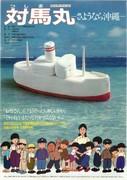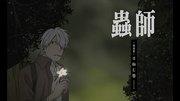Tsushima Maru - A moving story depicting a farewell to Okinawa

Tsushima Maru - Goodbye Okinawa - The tragedy of war and the courage of children■ Public Mediatheater ■ Original MediaBiographies and Autobiographies ■ Release dateOctober 24, 1982 - January 1, 0000 ■Distribution companyCinema Work ■ Eirin Number110867 ■Frequencies75 min ■ Number of EpisodesEpisode 1 ■Original Story・Original work: Tatsuhiro Oshiro (Rironsha Publishing) ■ Director・Direction: Osamu Kobayashi ■ ProductionProduced by Tsushima Maru Production Committee ■Works©cinemawork ALL RIGHTS RESERVED. ■ StoryIn July 1944, soldiers were being sent to various parts of Okinawa one after another, and the war was drawing near. Meanwhile, a staff meeting was being held at Naha National School, enveloped in an oppressive atmosphere of tension. "Evacuating school children is the closest service we can render to the nation. All of us must leave the prefecture except those who can work at the request of the military." "If the evacuation ship is destroyed by a submarine, who will be responsible...?" "Evacuation is a national policy." Although some teachers felt uneasy, the school was turned into a barracks for soldiers, and some teachers thought that they would be able to receive a more satisfactory education on the mainland than in Okinawa, where even the children would work on building an airfield every day, so the recruitment of children for evacuation was accelerated. Most parents expressed their anxiety about letting their children go. There was nothing to reassure them about, such as the dangers on the way and life over there. The teachers were not confident enough to allay their anxieties. Among them, only the children were happy to evacuate as if they were going on a school trip, saying things like, "If we go to Yamato, we can see the snow," "We can ride the train," and "We'll study and become boy airmen." Kiyoshi continued to insist that he wanted to go, despite his mother's objections. Some children also applied to evacuate without telling their parents. On August 21, about 5,000 evacuees and people seeing them off gathered at the port to board the Tsushima Maru. As the sky was covered with thick clouds, parents began to feel anxious, saying, "We're not going to be boarding a warship, are we?" Some of the children who climbed up the steep, cliff-like side of the Tsushima Maru and stepped onto the deck cried because they were lonely being away from their parents, but most were excited and enjoying being on a big ship for the first time. At 6:30 p.m., the ship started to move. Unfortunately, a light rain started to fall. "We can't see Okinawa. This trip is so bleak," Kenji and the others joked, laughing as they shook their heads. Carrying the noise of the children, the Tsushima Maru moved forward. The next night, the 22nd, the ship finally entered the most dangerous area. "It's an old ship, so it can't go fast. We should zigzag to avoid submarine attacks." "But that will delay our arrival." The transport commander told the captain, and the ship continued in a straight line. "If we're safe tonight, we'll reach the mainland tomorrow. Let's stay awake and be on alert." The teachers had the children sleep on the deck as much as possible, just in case. However, once half of them were on the deck, there was no place left to lie down. The children, tired from making too much noise last night, were fast asleep early. At 10:12 p.m. on the 22nd, the first "BOOM" hit the ship, followed by the second and third. After being hit by three torpedoes, the Tsushima Maru broke out into a fire that reached the sky and sank 11 minutes later. There was chaos inside the hold. The teachers threw the children who were not awake to wake them up. The children rushed to the rope ladder, stepping on people's heads. On deck, crew members and older children threw into the sea those children who could not get overboard. Parents and children, holding hands, jumped into the sea. However, most of the children sank with the ship. The children who clung to floating objects or rafts were hit by the high waves of the typhoon. They were attacked by sharks. The lucky ones were rescued by fishing boats the next day. Some children washed up on an island on the sixth day. Some were rescued on the eighth day. About a month later, Kiyoshi and his five children were quietly returned to Okinawa. They were told to absolutely keep the secret of the sinking... On October 10th, the first air raid on Naha took place. Naha city, with a population of 60,000, was reduced to ashes. As he watched the insanely burning flames, Kiyoshi spoke up. "The Tsushima Maru sank. Take-chan and Isamu-chan jumped into the sea and died. I couldn't say anything, and it was so hard..." ■ExplanationThe Tsushima Maru disaster was a tragic event in which only 156 of the 1,661 passengers survived. The victims were all innocent schoolchildren, small children, and ordinary citizens, making it an unprecedented tragedy, but it was not made public until after the war. Okinawa was the only place in the Pacific War where ground battles were fought and many civilians were killed, so people were caught in a dire situation where "it's hell to evacuate, and hell to stay." ■ Main staff・Planning by: Okinawa Prefectural Film Center Liaison Conference ・Original story by: Tatsuhiro Oshiro (Rironsha Publishing) ■ Related works・Selected by the Ministry of Education, ・Recommended by the Ministry of Health, Labor and Welfare's Central Children's Council, ・Recommended by the Japan PTA National Council, ・Recommended by the Eirin Youth Film Council, ・Recommended by the Japan Film Pen Club, ・Recommended by the Catholic Public Relations Committee ■Detailed reviews and recommendations■ Historical background and significance of the work"Tsushima-Maru: Goodbye Okinawa" depicts the Tsushima-Maru disaster that occurred on August 22, 1944. This was a tragedy that occurred during evacuation from Okinawa to the mainland during the Pacific War, and many children became victims. Based on this historical event, the film depicts the horror of war and the courage of children. This film tells the story from the perspective of children who became victims of the war, evoking deep emotion and reflection in the audience. In particular, it strongly emphasizes the cruelty of war by depicting the misery of the Battle of Okinawa and the reality of the forced relocation of children in the name of evacuation. The film also depicts the postwar reconstruction of Okinawa and the desire for peace, playing an important role as part of history education. ■ Storytelling and directionDirector Osamu Kobayashi conveys the horror of war realistically by telling the story from the children's point of view. In particular, the scene in which the Tsushima Maru sinks depicts the chaos and terror so realistically that it leaves a strong impact on the audience. The contrast between the innocence of the children and the cruelty of war is also effectively depicted throughout the story. The first half of the film shows children looking forward to being evacuated. They talk about their dreams, saying things like, "If we go to Yamato, we'll be able to see the snow," and "We'll be able to ride a train." However, the second half shows the moment those dreams are shattered in an instant, emphasizing the cruelty of war. This contrast is an important element that provokes deep emotion and reflection in the audience. ■Characters and ActingThe central characters of the film are Kiyoshi and his friends who decide to evacuate. The actor who plays Kiyoshi gives a realistic portrayal of a strong-willed character, even though he is just a child. The other children are also portrayed with strong personalities, leaving a deep impression on the audience. In particular, the children's performances in the scene where the Tsushima Maru sinks will evoke strong emotions in the audience. The characters of teachers and parents also play important roles. They try desperately to keep the children safe, but are overwhelmed by the cruelty of war. Through these characters, the tragedies of war and the dignity of human beings are depicted. ■Video and MusicThe film's visuals leave a strong impression on the audience by contrasting the beautiful scenery of Okinawa with the horror of war. In particular, the scene in which the Tsushima Maru sinks, with its realistic depictions of the fire and sea, leaves a strong impact on the audience. Music is also used effectively to match the progression of the story, helping to heighten the audience's emotions. The film's music deeply moves the audience by contrasting the innocence of children with the tragedy of war. In particular, the music in the scene where the Tsushima Maru sinks will evoke strong emotions in the audience. The ending of the film also uses music that expresses a wish for peace, encouraging deep reflection in the audience. ■ Social impact and evaluation"Tsushima-Maru: Goodbye Okinawa" has been highly praised as a work that depicts the tragedy of war. In particular, by depicting the misery of the Battle of Okinawa and the courage of children, it has deeply moved and inspired audiences to reflect on their past. The film also depicts Okinawa's postwar reconstruction and hope for peace, playing an important role as part of history education. The film has received high praise from many organizations, including selection by the Ministry of Education, recommendation by the Ministry of Health, Labor and Welfare's Central Children's Council, recommendation by the National Council of PTAs of Japan, recommendation by the Eirin Youth Film Council, recommendation by the Japan Film Pen Club, and recommendation by the Catholic Public Relations Committee. These praises demonstrate the important role that the film plays in inspiring deep emotion and reflection in the audience by depicting the tragedies of war. ■ Recommendations and how to watch"Tsushima-Maru: Goodbye Okinawa" is a work that depicts the tragedy of war and is recommended for everyone. In particular, it is recommended that it be viewed at school or at home as part of history education. The film is not only shown in theaters, but is also available on DVD and video. Please learn about the horror of war and the courage of children through this work. Related information and references・Tsushima-Maru by Tatsuhiro Oshiro (Rironsha Publishing) As mentioned above, I recommend "Tsushima-Maru: Goodbye Okinawa" to everyone as a work that depicts the tragedy of war. In particular, I recommend watching it at school or at home as part of history education. The film is not only shown in theaters, but is also available on DVD and video. Please watch this film to learn about the horror of war and the courage of children. |
>>: The Appeal and Evaluation of Pro Golfer Monkey: Review of the First Series
Recommend
"Hi, Mom" Super Wonder Woman Jia Ling Becomes the World's Highest-grossing Female Director
In the 2021 Spring Festival, Jia Ling's "...
Hidamari Sketch x 365 Special Edition: A review of the healing everyday life and new charms
"Hidamari Sketch x 365 Special Edition"...
"It's Your Turn" theatrical version of the knee pillow posters of the protagonist and the villain are released, and the special trailer is released
Today (July 12), the official version of the &quo...
"Venom: Let There Be Carnage" new Chinese trailer shows new abilities in the fight
Recently, a new trailer for the movie "Venom...
"The Goddess Dormitory Manager." TV animation new stills will be officially launched on July 14
The TV animation of the manga "The Manager o...
A thorough analysis of the emotion and charm of "Powa Powaan," the song everyone loves!
Powa Powan - The charm and history of Minna no Ut...
Food Wars!: Shokugeki no Soma Review: Exploring the pinnacle of cooking anime
Food Wars!: Shokugeki no Soma - A young man's...
Eleven and Dachao star in "Miss Holmes" and the trailer will be aired in September
The first trailer of the new film "Miss Holm...
Rumiko Takahashi returns! A new manga "MAO" will be serialized in May
Rumiko Takahashi, who created famous comics such ...
"That Time I Got Reincarnated as a Slime" Coleus' Dream - The Appeal and Evaluation of OAD#2
"That Time I Got Reincarnated as a Slime: Th...
Denzel Washington may play the black version of "Magneto"
Now is the era of superhero movies, and Marvel is...
The disaster film "28 Years Later" is scheduled to be released in North America on June 20 next year
Today (May 11), the sequel to the disaster film &...
The official trailer of "Joker 2: Double Delusion" shows the clown getting depressed in the rain
renew: The official trailer of "Joker 2: Dou...
Brad Pitt expected to return in action film Bullet Train 2
According to foreign media reports, Brad Pitt'...
Many starring guests attended the Los Angeles premiere of Spider-Man: No Return
Today (December 14), the movie "Spider-Man: ...









